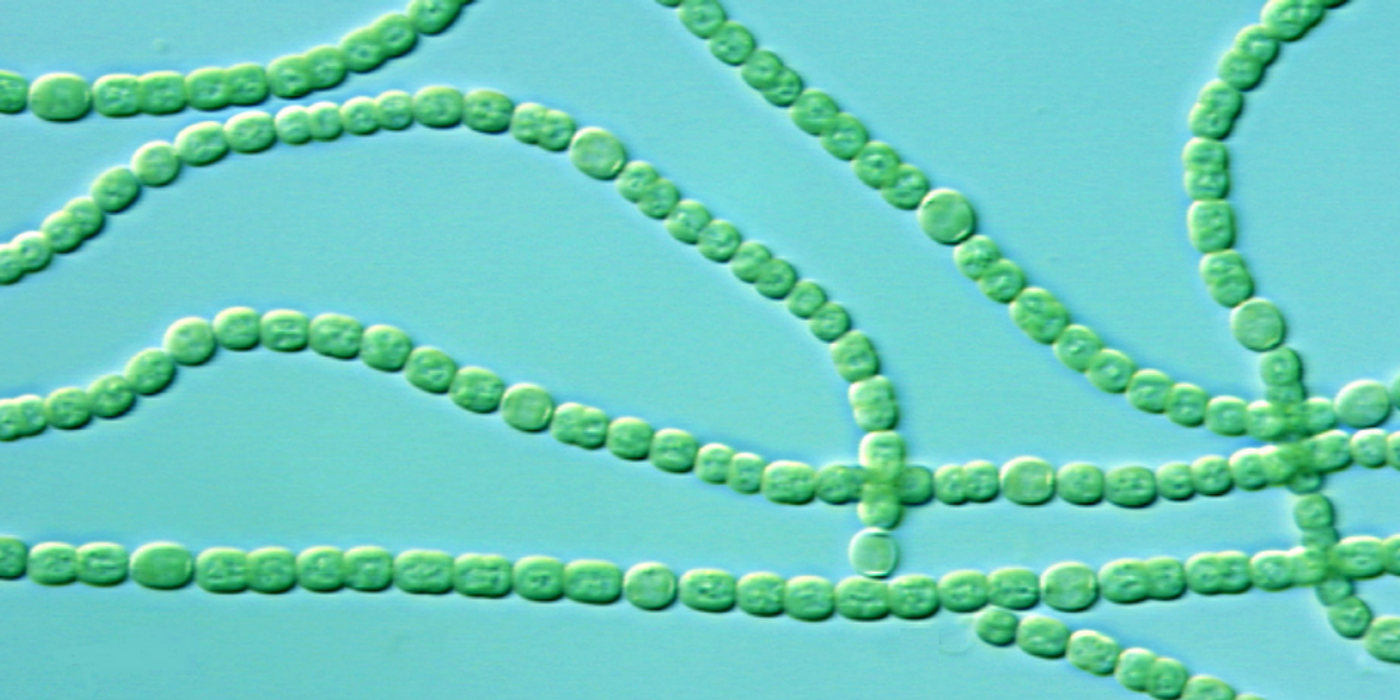Sunscreen from microbes?
“All natural” products are all the rage. How about sunscreen made by cyanobacteria? Can’t get more natural than that, right?
Carole Llewellyn of Swansea University contributed to a review on the subject. According to Llewellyn, “as we move into an era where we are turning to nature to replace synthetic chemicals, industry is being driven to look to natural product alternatives. Cyanobacteria, tiny photosynthetic microbes, offer new potential. One suite of compounds are synthesised to protect against damaging ultraviolet and intense sunlight. These compounds … offer many advantages over current synthetically derived sunscreens.”
Because cyanobacteria are photosynthetic, they need to be exposed to the sun to make energy. That doesn’t mean they’re immune to the sun’s harmful UV rays, however. They make compounds such as mycosporine-like amino acids and scytonemin to protect themselves from sun damage.
Sitting out in the sun also dries you out. For that, cyanobacteria make extracellular polymeric substances. Researchers think these substances could be added to traditional moisturizers - they retain moisture better than what’s currently used (stuff like urea and propylene glycol).
Chances are, researchers say, that these compounds are a safer alternative to the synthetic or inorganic substances that are currently used in suncreens and moisturizers. What’s more, cyanobacteria can be coaxed into churning out these compounds for us in bulk.
With this in mind, Peyman Derikvand, of the University of Isfahan in Iran, set about comparing natural compounds from cyanobacteria to synthetic sunscreens and moisturizers.
Mycosporine-like amino acids (MAAs) are small, colorless molecules that hang out in the cytoplasm and outer sheath of cyanobacteria. (They’re also made by dinoflagellates.) In fact, mycosporines (a broad class of photoprotectant compounds) from Porphyra umbilicalis (a red alga) are already used in two commercially available sunscreens - Helioguard365 and Helionori.
The MAAs used in Helionori are photo- and heat-stable, and they help reduce sunburn. Because they block UV radiation, they also protect DNA from UV-mediated damage - they block the formation of thymine dimers, for example. MAAs are also effective antioxidants - mycosporine-glycine quenches hydroxyl radicals. Because free radicals make our skin age, don’t be surprised when MAAs show up in your cosmetics and anti-aging creams.
Scytonemin is a lipid-soluble pigment that coats cyanobacterial colonies or larger mats to protect the cells from short-wave UV radiation. Not only can scytonemin block up to 90% of the sun’s UV rays, it’s also an antioxidant capable of scavenging free radicals. Chances are, scytonemin will also make its way into cosmetics in the near future.
Not all cyanobacteria live in moist environments - many actually live in the desert! The extracellular polymeric substances that I mentioned earlier help keep these colonies from drying out. In fact, if you take away these polymers, cells become very sensitive to dessication.
The urea and propylene glycol used in conventional moisturizers absorb moisture, but they don’t retain it. The cyanobacteria polymers do both, and they do it well. For example, the moisture retention value for urea is 15.9% - it’s 28% for cyanobacterial polymers. Once again, these compounds may be coming to a moisturizer near you.
Sources: European Journal of Phycology, Science Daily









